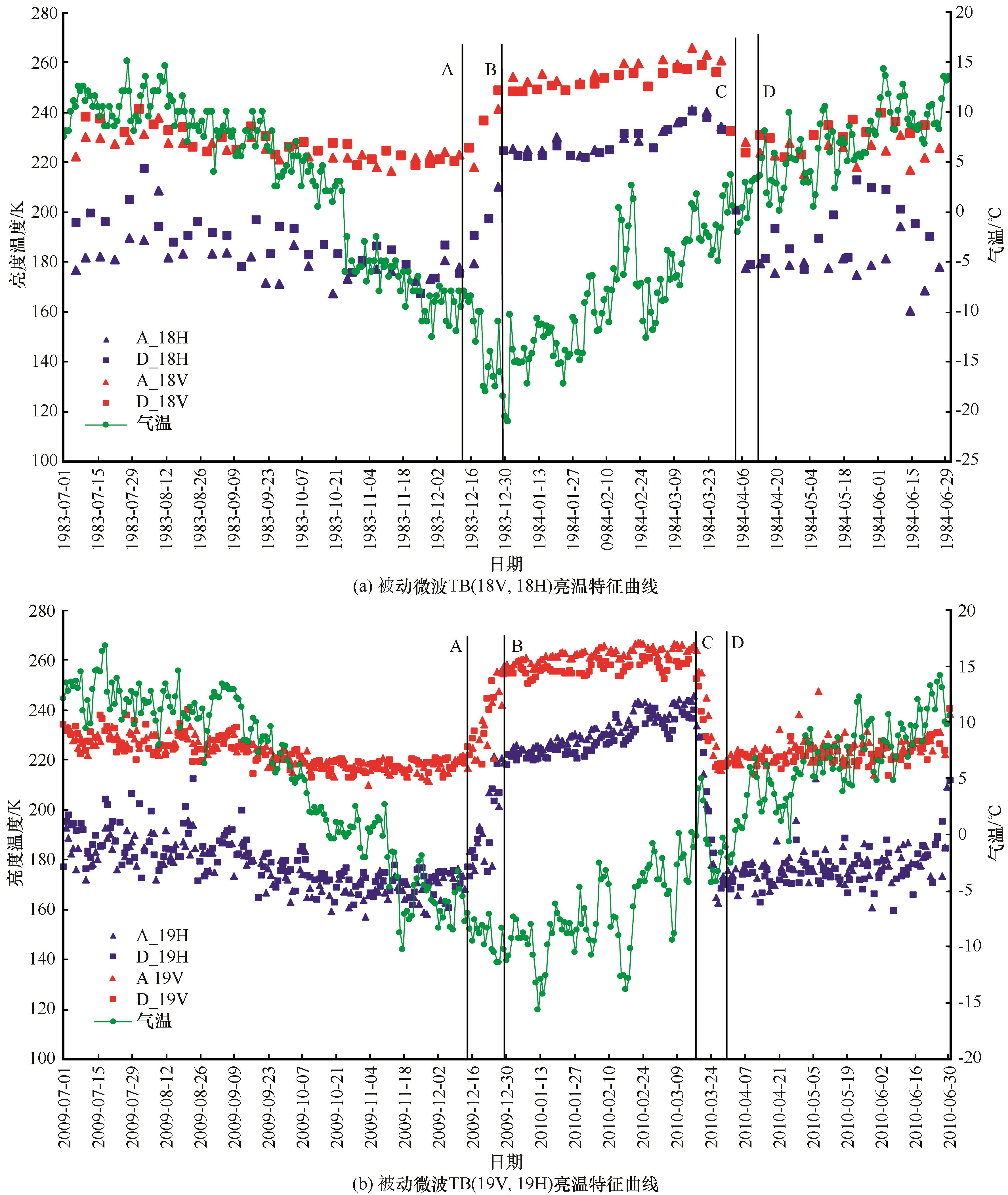利用被动微波探测青海湖湖冰物候变化特征
Detecting changes of ice phenology using satellite passive microwave remote sensing data in Qinghai Lake

利用被动微波探测青海湖湖冰物候变化特征 |
| 汪关信, 张廷军, 李晓东, 何灼伦, 李宇星 |
|
Detecting changes of ice phenology using satellite passive microwave remote sensing data in Qinghai Lake |
| Guanxin WANG, Tingjun ZHANG, Xiaodong LI, Zhuolun HE, Yuxing LI |
| 图4 被动微波TB(18V,18H)、TB(19V,19H)遥感数据与实测湖冰物候特征曲线 |
| Fig.4 Characteristics of lake ice phenology and passive microwave in TB(18V,18H),TB(19V,19H),lines A,B,C,and D indicate the ice onset day,ice on day,initial ice melt day,and the last day of lake ice,which are extracted by field observation and MRR data. A_19H is brightness temperature of ascending orbit in 19 GHz with Horizontal polarization,D_19V is brightness temperature of descending orbit in 19 GHz with vertical polarization |

|